Sore muscles. Aching joints. The pressure to perform and hours of demanding, physical work. This could easily describe the daily grind of working the line in a restaurant kitchen. In many ways, it doesn’t seem like a stretch that a grueling three-day, three hundred-mile annual charity cycle to raise funds for No Kid Hungry, a nonprofit organization dedicated to battling childhood hunger, was originally driven by chefs.
Four years ago, the Chefs Cycle was born when a small group of chefs approached Adele Nelson—now acting director of the event—to propose the cross country charity ride. After testing the waters with an inaugural route from New York City to Washington D.C., they expanded to two rides in 2015—one on each coast. In 2016, 124 riders came together to raise a staggering one million dollars, and a year later the event saw 225 riders participate in the ride in Santa Rosa to collectively raise two million dollars.
The event has been part of an effort to address the epidemic of proactive childhood hunger, something many of these chefs inherently feel compelled to fight. “No chef can grapple with the fact that thirteen million children don’t have enough food to eat in this country. That’s one in six kids,” Nelson says. “They want to do their part to change that.” As leaders in an industry designed to feed and provide care, the cycle allows them to nurture communities in a new and unique way. This year, the events in Santa Rosa and Charlottesville are expected to attract roughly four hundred riders combined. According to Nelson, since $1 has the power to connect one child with ten meals, the 3.5 million dollars they are on track to raise will go a long way in feeding the country’s most vulnerable kids.
This season, Travis Strickland of Baltaire, Jared Simons of No Name, and Life & Thyme photographer Jim Sullivan are participating in the cycle. They’ve shared what the event means to them, as well as a few key training tips.
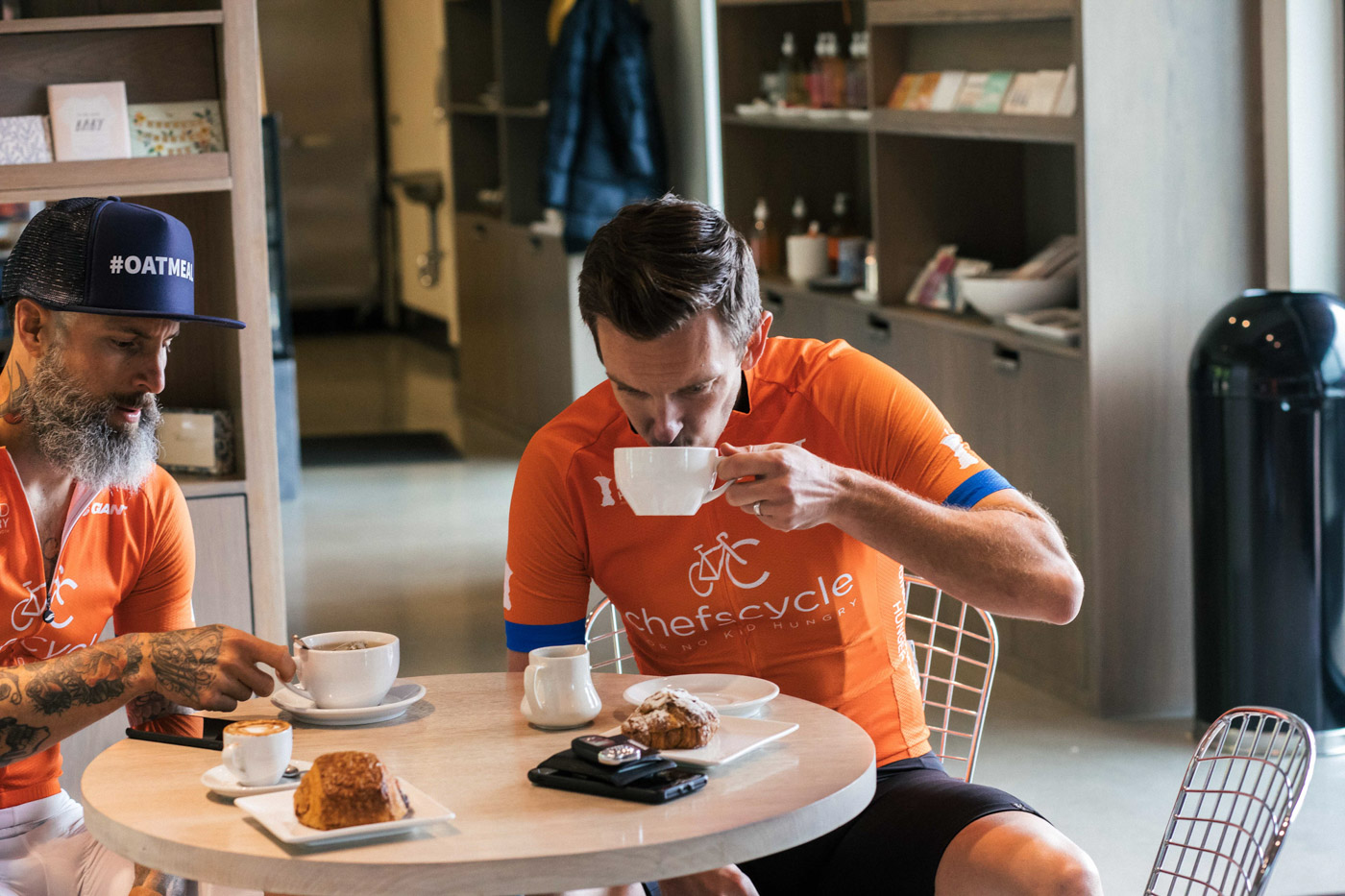
Travis Strickland
Baltaire, Los Angeles
I pay attention to my diet as it is important, but I also approach it from a realistic standpoint where I’m not putting too much pressure on myself. Part of my career is eating out and trying new things. As we get into final training six to eight weeks out, I will cut out alcohol completely until after the ride. This is an easy trick to “lean out,” and I also feel like after a couple glasses of wine the night before, it is much easier to skip training the next day, or make an excuse to stop early. I also focus on getting enough lean protein; it helps for muscle recovery and strength building. I try to fill up on lean meats and veggies, as opposed to carbo-gorging.
One of the biggest mistakes I made when beginning this journey was not understanding the correct way in which to properly fuel before and during the ride. Especially if you find yourself miles away from home with nothing to eat or drink, and having your internal tank on “empty.”
One tip I received, which I find helpful during the really intense parts of the ride, is to slow the mind. As intensity increases, relax your gaze, look twenty to thirty feet ahead, relax your shoulders, focus your attention on your breath and get comfortable being uncomfortable. When you are really suffering and thinking about where the top of the hill is, or looking at the road getting more steep ahead, it can feel overwhelming. By focusing the mind, and being present with yourself in that moment, it is truly amazing when you get to that calmness how quickly you can progress.

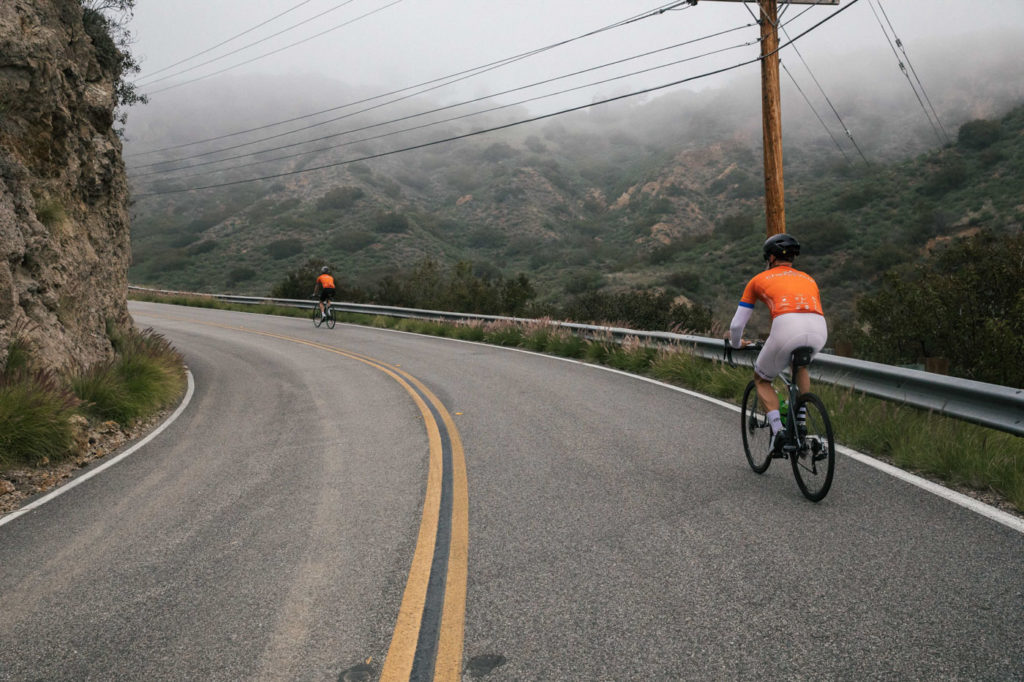
The other tip I have for a new participant is to understand and respect the demands of a ride like this. If someone thinks they can wake up and complete a ride like this without any training, it will be a very long and unhappy trip.
This is year two for me with Chefs Cycle. As soon as last year’s ride was over, I was already looking forward to the next one. In fact, I’m participating on both the East and West Coast rides this year for a total of six hundred miles.
The three hundred miles is no doubt an accomplishment, and every chef who completes this should be very proud of that. For me, it’s sitting around after the ride is finished with your peers, sharing stories about training or the ride itself, and knowing that we’ve done something to make a difference in the lives of those in need. That is the true accomplishment.
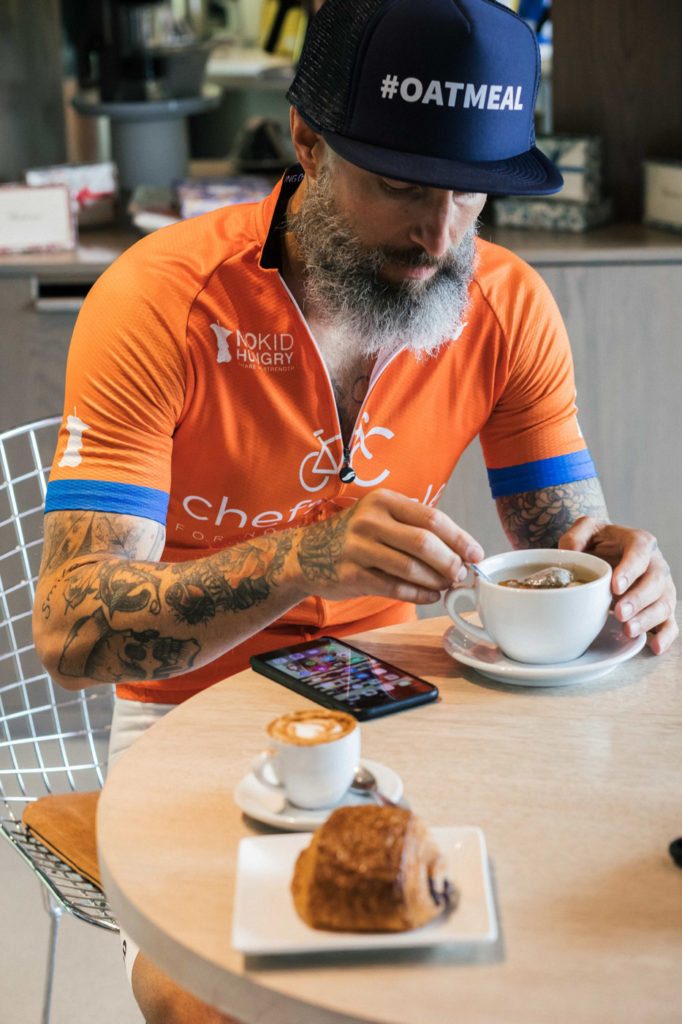
Jared Simons
No Name, Los Angeles
Eating vegan, I get all the nutrients I need for training and recovery. I try to avoid the junk food trap and eat whole plant foods—the less processed the better. I make a concession on race day and events for the simple sugars, gels, and hydration blends necessary to get nutrients quickly.
My tops tips would be to get your training in. It’s a long event so you can’t just show up and ride or you will hurt. Secondly, I would say enjoy. The riding is a great escape from the day-to-day grind of restaurant life.
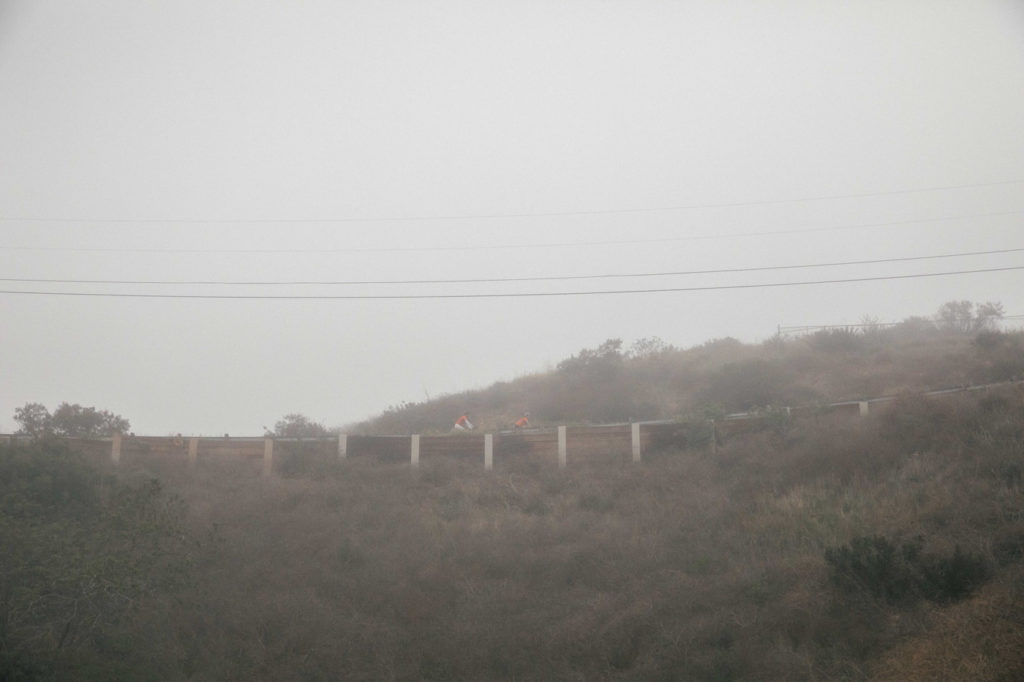
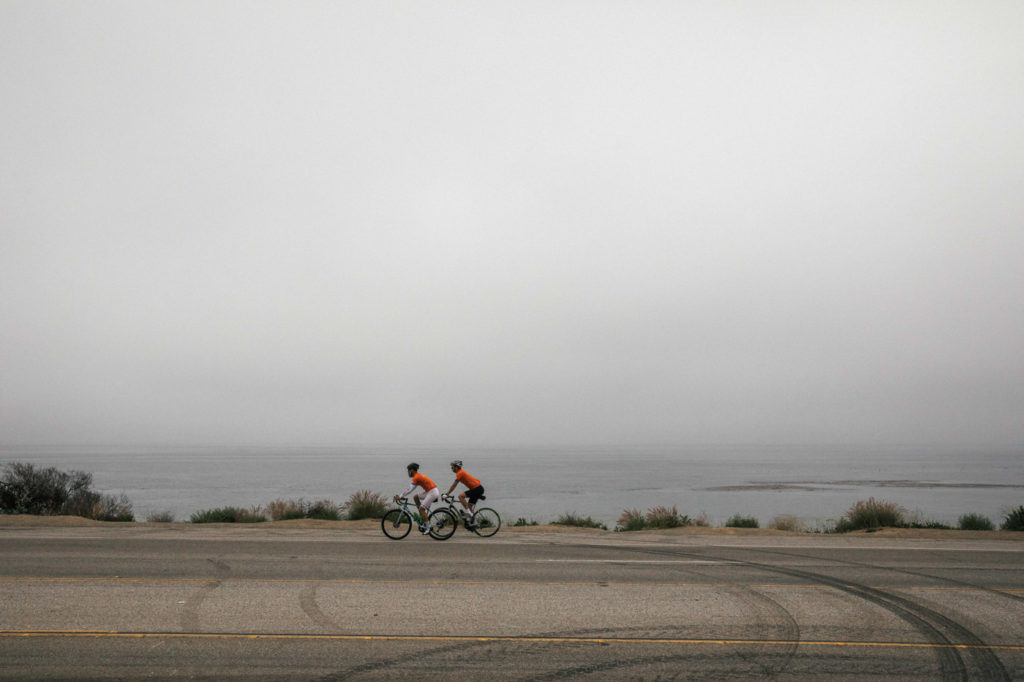
I look forward to the last few miles of the ride and the sense of accomplishment. While I have trained hard and feel comfortable with the distance, I can look back and say I just crushed three hundred miles—something most people would never even think about doing. My hope is that what I do on a physical level will inspire others to get out and challenge themselves and get healthy.
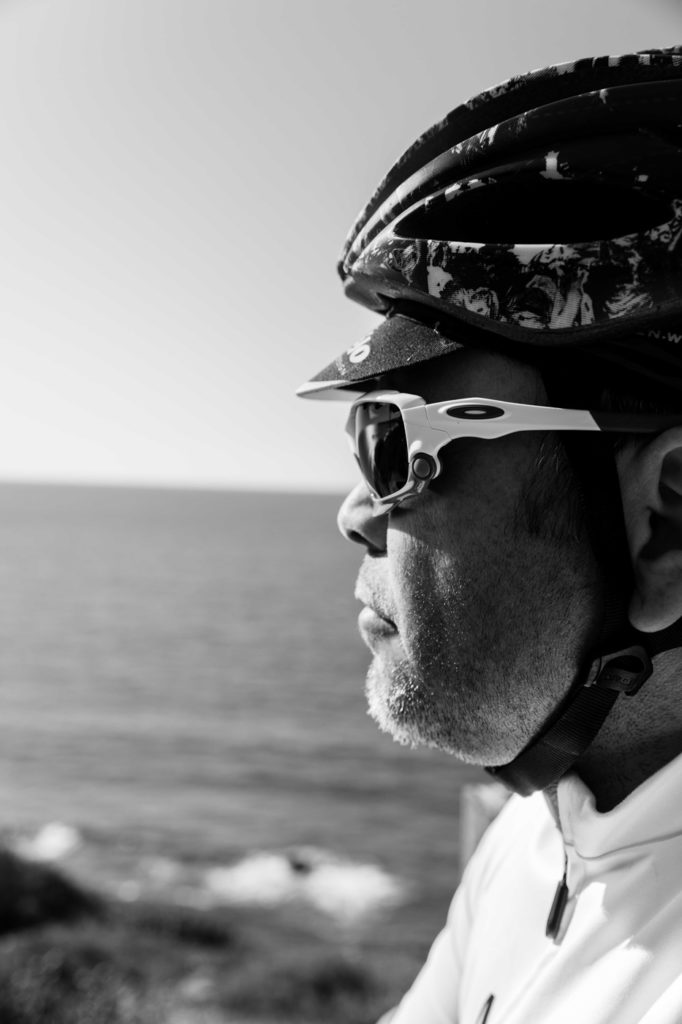

Jim Sullivan
Chef/Photographer, San Diego
This time last year I first learned about No Kid Hungry and felt compelled to help. When sign-ups came out for 2018, I jumped at the chance. I feel strongly about helping others and giving back, especially children.
When I was younger, I was a competitive triathlete, so in training for NKH, I felt I could jump back into that mode. I haven’t been doing much in the way of training over the last couple of years; I had a bad back injury and recovery has been slow. So deciding to do the Chefs Cycle has inspired me to get back on the bike.
As far as diet, I try to eat clean as much as I can—lots of greens, good sources of protein—and eating in small amounts. I have given up alcohol (not that I am a big drinker) to avoid any unnecessary calories.
Two tips I would give to other chefs training for NKH are: 1) Get some altitude training on the bike. Riding and training at elevation is a huge help. 2) Hills, hills, hills! As much as most people hate hills, there is no better way of conditioning.
Being passionate about giving back and helping others like No Kid Hungry, it only makes me that more inspired having some of my clients supporting me. Companies like Puesto, The Crack Shack, and Blue Bridge Hospitality have been vital in raising the funds for NKH. Without them, I wouldn’t have reached my goal. I’m in this for the long haul. Children should not have to worry about where their next meal is coming from.





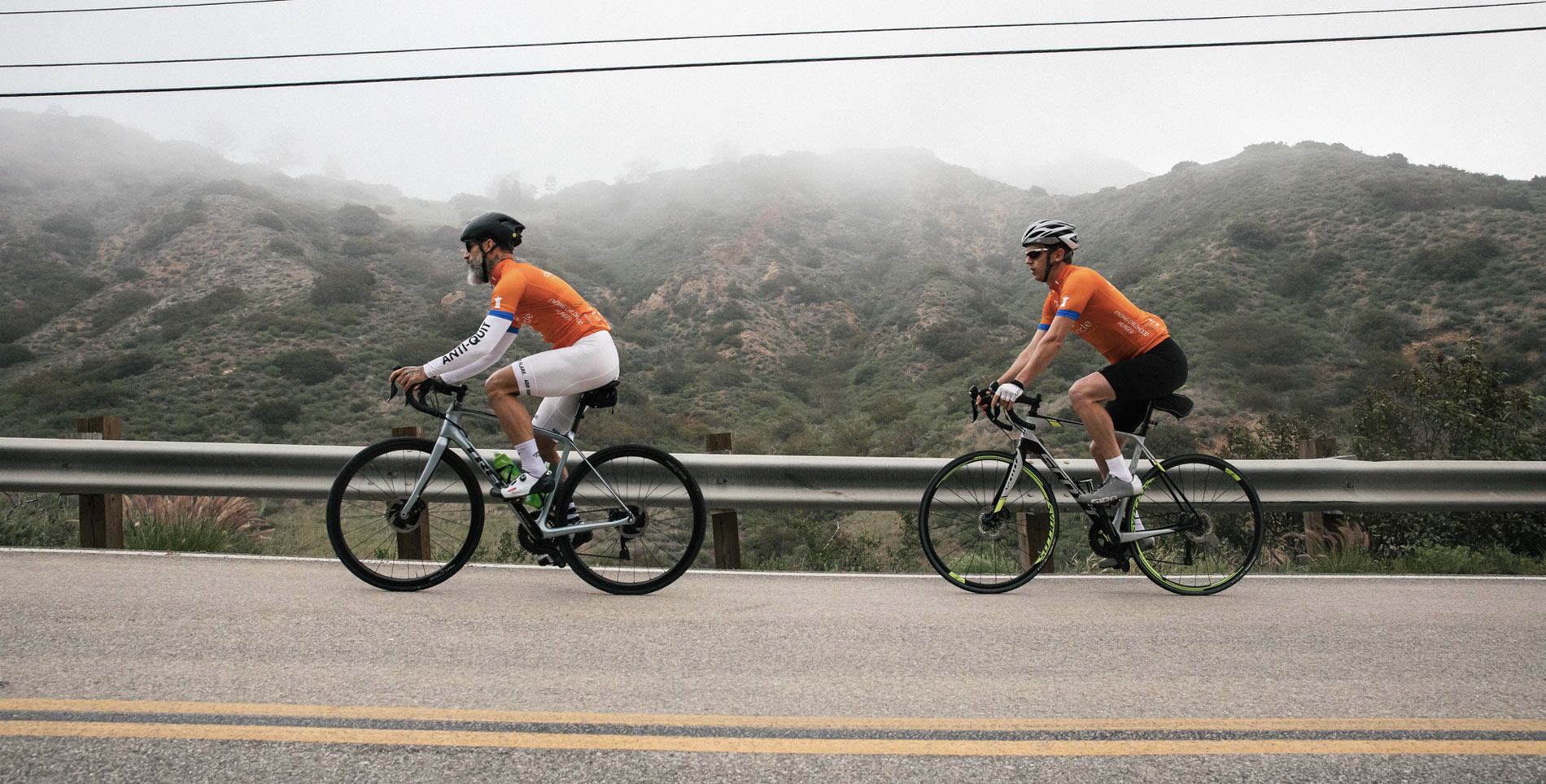

Our comments section is for members only.
Join today to gain exclusive access.